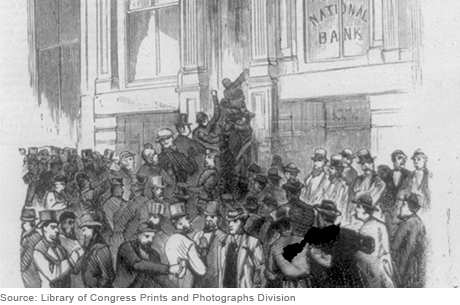Just Released: Household Debt Grew Slowly in 2015 as Mortgage Balances Stayed Flat

This morning, New York Fed President William Dudley spoke to the press about the growing resilience of the U.S. household sector. His speech was followed by a briefing by New York Fed economists on developments in household borrowing. Their presentation included a detailed decomposition on mortgage borrowing and payment trends, and some new research on how borrowing has evolved differently across age groups. Today, the New York Fed also released the Quarterly Report on Household Debt and Credit for the fourth quarter of 2015. The report, the press briefing, and the following analysis are all based on the New York Fed Consumer Credit Panel, which is itself based on consumer credit data from Equifax.
Primary Dealer Participation in the Secondary U.S. Treasury Market

Michael J. Fleming, Frank M. Keane, and Ernst Schaumburg The recent Joint Staff Report on October 15, 2014, exploring an episode of unprecedented volatility in the U.S. Treasury market, revealed that primary dealers no longer account for most trading volume on the interdealer brokerage (IDB) platforms. This shift is noteworthy because dealers contribute to long-term […]
Is Treasury Market Liquidity Becoming More Concentrated?

Michael Fleming In an earlier post, we showed that Treasury market liquidity appears reasonably good by historical standards. That analysis focused on the most liquid benchmark securities, largely because data availability is best for those securities. However, some studies, such as this one and this one, report that market liquidity is concentrating in the most […]
Further Analysis of Corporate Bond Market Liquidity

Tobias Adrian, Michael Fleming, Erik Vogt, and Zachary Wojtowicz Our earlier analyses from last October and earlier in this series looked at market liquidity measures averaged across all corporate bonds or broad sub-groups of corporate bonds. Commentators have pointed out that such broad averages might mask important differences among narrower sub-groups of bonds and that […]
Corporate Bond Market Liquidity Redux: More Price‑Based Evidence
Has MBS Market Liquidity Deteriorated?

Rich Podjasek, Linsey Molloy, Michael J. Fleming, and Andreas Fuster Mortgage-backed securities guaranteed by the government-backed entities Fannie Mae, Freddie Mac, and Ginnie Mae, or so-called “agency MBS,” are the primary funding source for U.S. residential housing. A significant deterioration in the liquidity of the MBS market could lead investors to demand a premium for […]
Continuing the Conversation on Liquidity

Tobias Adrian, Michael J. Fleming, and Ernst Schaumburg Market participants and policymakers have raised concerns about market liquidity—the ability to buy and sell securities quickly, at any time, at minimal cost. Market liquidity supports the efficient allocation of financial capital, which is a catalyst for sustainable economic growth. Any possible decline in market liquidity, whether […]
Crisis Chronicles: The Long Depression and the Panic of 1873

It always seemed to come down to railroads in the 1800s. Railroads fueled much of the economic growth in the United States at that time, but they required that a great deal of upfront capital be devoted to risky projects. The panics of 1837 and 1857 can both be pinned on railroad investments that went awry, creating enough doubt about the banking system to cause pervasive bank runs. The fatal spark for the Panic of 1873 was also tied to railroad investments—a major bank financing a railroad venture announced that it would suspend withdrawals. As other banks started failing, consumers and businesses pulled back and America entered what is recorded as the country’s longest depression.













 RSS Feed
RSS Feed Follow Liberty Street Economics
Follow Liberty Street Economics